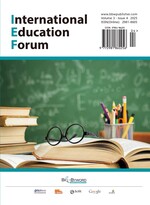The Characteristics of the English Translation of Chinese Literary Works in the Context of the New Era
Abstract
Under the background of the new era, the English translation of Chinese literary works presents diversified characteristics. With the acceleration of globalization and the international dissemination of Chinese culture, more and more Chinese literary works have been translated into English and entered the world. In this process, translators not only need to accurately convey the meaning of the original text, but also need to take into account cultural differences, so that the translation can not only retain the style of the original work, but also be accepted by foreign readers. This paper aims to explore the main characteristics of the English translation of Chinese literary works under the background of the new era and analyze its unique manifestations in terms of language, culture, and aesthetics.
References
Wu QJ, 2025, The Representation of Humor in Literary Translation: Taking the Translations of Lao She and Dickens’ Works as Examples. Beijing Social Sciences, 2025(1): 28–40.
Zhang TY, You J, 2024, The Intervention of Translation Norms in the Translation of Chinese Literary Works. Proceedings of the Year-end Symposium on Education Innovation and Experience Exchange in 2024, 469–472.
Guo LL, Fan X, 2024, The Enlightenment of Reception Theory on the Translation and Publication of Chinese Classic Literary Works: Taking the English Version of “Water Margin” as an Example. Journal of Liaoning University of Technology (Social Science Edition), 26(4): 70–72.
He PR, 2024, The Adaptation of Chinese Culture in the Translation of Literary Works: Taking “Pride and Prejudice” as an Example. Jiaying Literature, 2024(11): 97–99.
Yan LM, 2023, The Study of the Translation of Chinese Literary Works in a Cross-cultural Context: Taking the English Version of “Border Town” by Jeffrey C. Kinkley as an Example. Jin Gu Wen Chuang, 2023(28): 103–105.
Shen QC, 2022, A Study on the Translation of Chinese Classical Literary Works from the Perspective of Reception Theory. Journal of Jiangxi Vocational and Technical College of Electricity, 35(7): 162–163.
Wei GF, 2022, A Cognitive Study on the Translation of “Local Language” in Chinese Modern Literary Works, thesis, Beijing Foreign Studies University.
Zhang LL, 2022, Going Global of Chinese Literature Publishing: Three Consciousnesses and Their Linkage Mechanism. China Publishing Journal, 2022(2): 66–68.
Yin FZ, Li Y, 2021, An Analysis of the Control Effect of the Translation and Dissemination Subject: Taking the English Translation and Publication of Contemporary Chinese Literary Works as an Example. Journal of Social Sciences of Hunan Normal University, 50(6): 76–82.
Zhang LF, 2020, A Study on the Translation and International Dissemination of Chinese Literary Works in the Context of the New Era: Taking Howard Goldblatt’s Translation Methods and Literary Translation and Dissemination as an Example. Jin Gu Wen Chuang, 2020(39): 82–83.
Chang YH, 2024, The Transformation of Cross-cultural Perspectives and Translation Skills in English Translation. Modern English, 2024(3): 115–117.
Li L, 2023, A Brief Analysis of the Characteristics and Translation Skills of Fuzzy Language in British and American Literary Works. Journal of Shanxi Institute of Energy, 2023(4): 73–75.
Wang GW, 2024, Translation Skills of English Literary Works from an Aesthetic Perspective. Central Plains Literature, 2024(11): 60–62.
Guo YT, 2022, An Analysis of the Handling Methods of Cultural Differences in the Translation of English Literary Works. Overseas English, 2022(15): 17–18.
Wang J, 2020, The Influence of Cultural Differences on the Translation of English Works and the Handling Skills. Journal of Harbin Vocational & Technical College, 2020(4): 3.

